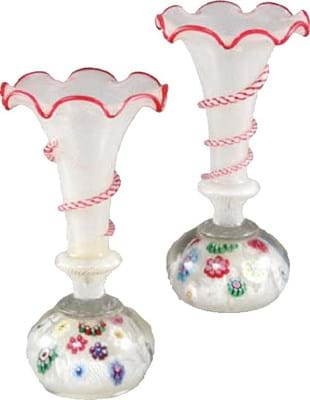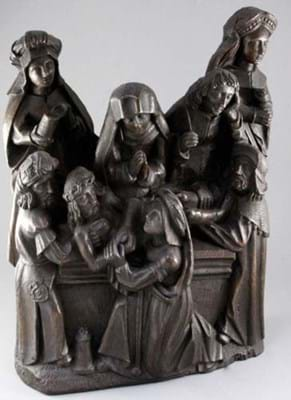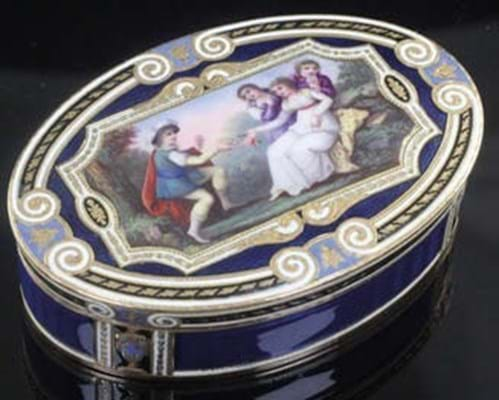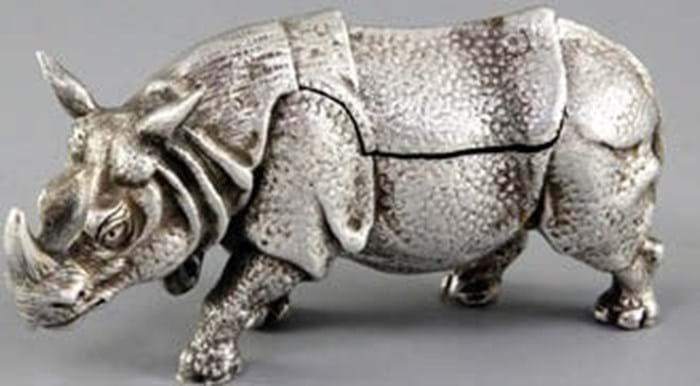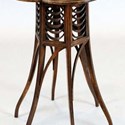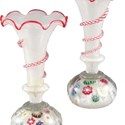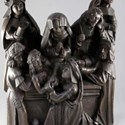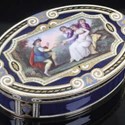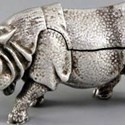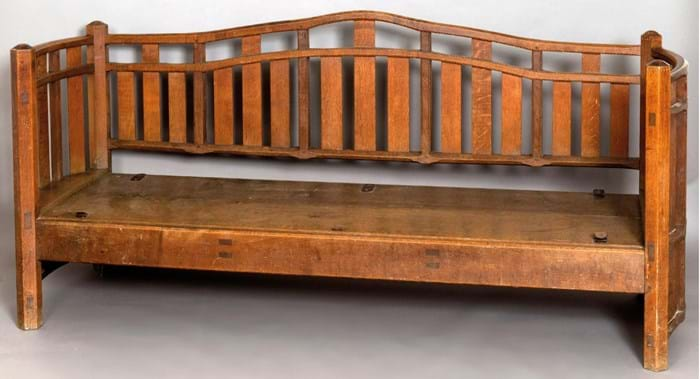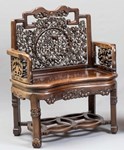Excellent in itself, the result left the question as to whether this was a case of a number of high-sellers distorting the total – the familiar ‘best and the rest’ syndrome – or an encouraging sign for the market generally.
“The best is strong but we did feel a slight lift in all-round enthusiasm – with the glaring exception being almost anything Victorian,” said Lewes auctioneer Clifford Lansberry after 74% of the 1250 lots got away on September 26.
Lansberry is not given to over-optimistic hype and his ‘slight lift’ view may be seen as one which can colour opinions of some in the trade.
Fine start
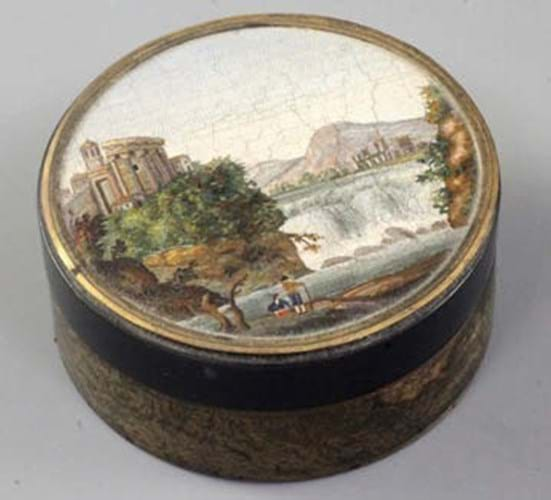
This 3in (7.5cm) wide 19th century Italian micro mosaic snuff box, decorated with the view of the Falls at Tivoli, was a typical souvenir piece originally bought by British travellers. Against a £400-600 estimate, it sold to an Italian buyer at £3600, further evidence of the durability of these ‘grand tour’ pieces.
The day got off to a fine start with the first lot – the 19th century Italian micro-mosaic and tortoiseshell snuff box illustrated above which sold to an Italian buyer at £3600.
Overseas buying was a feature of the day, no doubt helped by the comparative weakness of sterling, but nevertheless welcome.
Two US collectors demolished estimates (“which were perhaps a little mean”, said Lansberry) on two 19th century French paperweights.
One was on a rare Clichy millefleur double paperweight inkwell, 4¼in (11cm) diameter. It was estimated at £300-500 but sold at £6500.
Going further above hopes was a pair of 5½in (14cm) tall millefleur glass paperweight pen holders/vases. With latticino and applied barber’s pole cable decoration to the trumpet-shaped stems, and flowerhead and silhouette cane rods on a scattered muslin ground, these were catalogued as ‘probably 19th century’. Pitched at £200-400, they sold at £9000.
The overseas contribution to the days success continued with a Dutch buyer taking a 17th century Flemish carved oak group.
The 22½in x 16in (57 x 41cm) piece depicting the Entombment of Christ more than doubled the top estimate, selling at £7500.
Chinese buyers made their familiar but always welcome, estimate-busting presence felt.
Topping the section was an 18th century, 5in (13cm) wide fangding-style bronze and silver wire-inlaid censer.
Bearing an archaistic four-character seal mark to the base and on a silver wire inlaid fitted hongmu wood stand, it was estimated at £300-500 and sold at £15,000.
RAF service
Entries from the descendants of an entrepreneurial Englishman made a significant contribution to the Oriental offerings.
Having served in the RAF in the First World War, Leonard Baybut went to India and set up a furniture factory in Srinagar.
A contract to refurnish the summer palace of the maharajas of Jammu and Kashmir led to a lasting friendship with the last maharaja and to becoming his private secretary from 1948-59, when ill-health forced Baybut’s return to England.
Among the pieces he brought home was an early 20th century Chinese ‘Hundred Birds’ embroidered four-fold screen of ivory silk panels within pierced and carved ebonised frames.
Standing 5ft 5in tall x 6ft 8in (1.66 x 2.04m) wide overall, the screen tripled top expectations to make £9000.
Used as we are to Chinese pieces leaving estimates behind, results for English furniture were more of a surprise.
Topping the results sheet was a pair of George III French Hepplewhite mahogany card tables.
These distinctive pieces measuring 3ft 1in x 18in (94 x 45cm) deep had serpentine folding tops and urn-carved friezes on anthemion carved and cabriole legs.
A Norman Adams label to the underside added to their desirability and, against a pessimistic £1500-2000 estimate, sold to an anonymous buyer at £28,000.
Although Aesthetic period furniture varies wildly in price, the £400-600 estimate on an inlaid coromandel and rosewood occasional table looked an equally here-to-sell sign given that it was a Charles Edward Hoston, Lamb of Manchester piece.
Illustrated above, the table featured a 20in (51cm) wide hexalobed top with copper, brass and shell inlaid foliate design and an ornately pierced and swagged underframe.
Stamped J. Lamb Manchester 51600 and with a Fine Art Society provenance, it sold to the London trade at £9600.
More standard entries in the furniture section also did well.
An early 18th century, 2ft 4in (71cm) tall featherbedded walnut lowboy with quarter veneered top and a concave starburst central drawer was on later cabriole legs but went seven times over estimate at £7400.
A 4ft 4in tall x 2ft 4in wide (1.37m x 71cm) George I carved giltwood mirror, with pieced scallop and scroll crest and serpentine bordered rectangular plate, took a five-times-estimate £5200.
Cotswolds creations
Throughout the long depression of furniture prices, Cotswolds School creations have been among the most resilient and the best continue to be in keen demand.
This was exemplified by an Arts & Crafts oak settee by one of the greatest names, Sidney Barnsley, which was offered at Lawrences (22% buyer’s premium) at Crewkerne on October 12.
The 7ft 2in (2.18m) wide settee was typical of Barnsley’s output in echoing the look, the pegged and jointed construction and chamfering techniques evident in rustic wagons.
It came with an impeccable provenance from a Dorset vendor. Barnsley had made the settee for his equally famous associate Ernest Gimson and it had been in the Gimson family until the 1980s, when it was given to Sir Anthony Denny who lived at Daneway House, the small Gloucestershire manor where Gimson and Barnsley had worked in the early years.
Estimated at a modest £6000- 8000, it was no great surprise when the settee left that behind, but the winning £33,000 from a UK dealer was considered a strong one.



